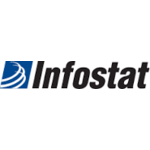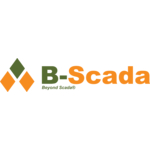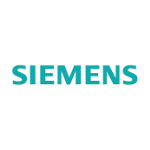TechnologyCounter provides genuine, unbiased real user reviews to help buyers make informed decisions. We may earn a referral fee when you purchase through our links, at no extra cost to you.
List of Best SCADA Software
Showing 1 - 11 of 11 productsAVEVA is a leading technology company that specializes in software solutions for the design, engineering, and operation of industrial facilities and infrastructure. With a commitment to innovation and customer satisfaction, AVEVA has been a trusted p...Read AVEVA Reviews
DAQFactory is a solution for simplifying and automating your data acquisition needs. With user-friendly features and a customizable interface, DAQFactory streamlines the process of collecting, analyzing, and visualizing data. From industrial applicat...Read DAQFactory Reviews
Scada-Lite Well Manager, a powerful software designed to optimize and streamline well management processes. With innovative features and user-friendly interface, Scada-Lite simplifies monitoring and control of well systems, making it the perfect solu...Read Scada-Lite Well Manager Reviews
GENESIS64 is a software designed to transform data into actionable insights for industrial automation and enterprise visualization. With its advanced features interface, GENESIS64 streamlines processes and enables seamless communication between syste...Read GENESIS64 Reviews
RIMDrill is a software designed to streamline drilling operations in the oil and gas industry. With its advanced features and user-friendly interface, RIMDrill offers a solution to increase efficiency, reduce costs, and improve overall performance. S...Read RIMDrill Reviews
LAquis SCADA is a leading software designed for industrial automation and control systems. With its powerful features and user-friendly interface, it is the go-to choice for businesses seeking efficient solutions. Whether monitoring production proces...Read LAquis SCADA Reviews
MODS Connect Suite is a software designed to streamline and enhance your business operations. This innovative suite offers a comprehensive solution for all your connectivity needs. With its advanced features and user-friendly interface, MODS Connect...Read MODS Connect Suite Reviews
CygNet SCADA is a software designed to streamline and automate complex industrial processes. With its user-friendly interface and robust functionality, CygNet SCADA enables businesses to make informed decisions, increase efficiency, and optimize oper...Read CygNet SCADA Reviews
FreyrSCADA is the top-choice software for businesses looking to streamline their processes and optimize their operations. With its user-friendly interface features, FreyrSCADA helps businesses of all sizes enhance their productivity and efficiency. S...Read FreyrSCADA Reviews
AVEVA Edge is a leading industrial automation software designed to enhance efficiency, reliability, and productivity. With powerful tools features, AVEVA Edge empowers businesses to streamline operations and make informed decisions. Trust in AVEVA Ed...Read AVEVA Edge Reviews
Siemens SCADA is a software that has revolutionized the world of industrial automation. With its advanced features and user-friendly interface, it has become a preferred choice for industries globally. From monitoring and controlling complex processe...Read Siemens SCADA Reviews
- What Is SCADA Software?
- Top Reasons Why Businesses Need SCADA Software?
- What Are the Top Key Features of SCADA Software?
- What Are the Top Benefits of SCADA Software?
- What Are the Steps to Choose the Right SCADA Software?
- What Are the Types of SCADA Software for Different Industries?
- What Are the Technology Trends for Best SCADA Software?
- What Are the Deployment Options for SCADA Software?
What Is SCADA Software?
The acronym SCADA stands for Supervisory Control and Data Acquisition. The aforementioned software is classified as an industrial control system, mostly employed for the purpose of monitoring and regulating physical processes.
Supervisory Control and Data Acquisition The best SCADA software is employed for the purpose of monitoring and regulating various parameters such as temperature, pressure, flow, and levels within a building or industrial facility.
In addition, they possess the capability to monitor and regulate switching equipment and electrical systems. SCADA software is frequently encountered in industrial control systems, serving as a vital intermediary between the physical processes and system users.
The best SCADA software is composed of three main components: a data acquisition system that establishes communication with sensors and data loggers, a supervisory system that manages the communication between the data acquisition system and the user interface, and a user interface that facilitates the display of status information and enables the adjustment of system parameters.
Supervisory Control and Data Acquisition top SCADA software provides the capability to be programmed in such a manner that they can generate alarm messages anytime a process deviates from its intended course. This functionality empowers operators to promptly and effectively implement corrective measures.
The software also can be built in such a way that it can generate alarm signals anytime a process surpasses a specific threshold or limit. This functionality serves to notify operators, prompting them to take proactive measures, if deemed essential.
SCADA software provides the capability to not only oversee and regulate physical operations, but also to effectively administer and supervise storage tanks containing hazardous materials, automate operator logs, and offer comprehensive data analysis and reporting functionalities.
In general, SCADA design software offers significant time and cost savings to organizations through the provision of an effective and dependable mechanism for overseeing and managing physical processes. Industrial control systems rely on them as a crucial component.
Top Reasons Why Businesses Need SCADA Software?
1. Increased operational efficiency – The implementation of SCADA software facilitates the automation of manufacturing processes, resulting in a reduction of labor expenses. Consequently, enterprises are able to achieve time and monetary savings.
2. Enhanced monitoring capabilities – The best SCADA software facilitates the acquisition and analysis of real-time data pertaining to the operational processes of enterprises, enabling them to promptly detect and address possible issues.
3. Improved safety and security – The utilization of top SCADA software aids in the identification and mitigation of unauthorized entry into plant systems and data, hence safeguarding the well-being of employees and machinery.
4. Reduced downtime – By implementing measures to ensure the proper functioning of machine parts and promptly addressing any required repairs and updates, organizations can effectively minimize machine downtime.
5. Improved data reliability – The utilization of the best SCADA software mitigates the occurrence of data inaccuracies arising from human fallibility or external influences, thereby guaranteeing that enterprises operate with precise and current information consistently.
6. Enhanced remote control and management – The utilization of SCADA software enables enterprises to remotely oversee and control their systems, eliminating the necessity for human presence at the facility.
7. Reduced inventory management costs – The utilization of popular SCADA software facilitates the reduction of inventory levels and the establishment of just-in-time supply chains inside businesses.
8. Improved energy efficiency – The utilization of the best SCADA software enables enterprises to effectively monitor and assess the efficacy of their energy-utilizing systems, hence resulting in financial benefits through reduced energy expenditures.
9. Scalability – The top SCADA software possesses the capability to be adjusted in scale, either expanded or reduced, to effectively adapt to the dynamic requirements of the business.
10. Improved decision making –The utilization of SCADA design software enables firms to make prompt and informed decisions by leveraging precise data, hence enabling them to maintain a competitive edge.
11. Automation of critical processes – The utilization of SCADA software enables the automation of repetitive operations and processes, hence allowing for the allocation of resources towards jobs that provide greater value.
12. Instant alerts – The top SCADA software facilitates the prompt transmission of notifications in the event of abnormalities or issues arising within the production process, so enabling enterprises to promptly respond and mitigate potentially expensive errors.
13. Flexibility – The integration of top SCADA software with pre-existing systems and its adaptability to suit the specific requirements of a business are readily achievable.
14. Reduced maintenance costs – SCADA software solutions aid businesses in minimizing maintenance expenses by consistently monitoring the condition of machines and autonomously detecting and addressing minor faults prior to their escalation into significant problems.
15. Improved customer experience – The implementation of the most popular SCADA systems in corporate operations contributes to the mitigation of production faults, hence enhancing the provision of dependable products and services, ultimately resulting in heightened levels of customer satisfaction.
What Are the Top Key Features of SCADA Software?
The top key features of the best SCADA software include:
1) Real-time Monitoring: Supervisory Control and Data Acquisition (SCADA) systems enable operators to actively monitor operational equipment in real-time, facilitating prompt responses to dynamic situations or issues.
2) Automated Reporting: The utilization of automated reporting and data collecting facilitates the rapid acquisition of personnel, automation, and quality data, hence enhancing the efficiency of production operations.
3) Flexible Configuration: SCADA system software possesses a high degree of adaptability, characterized by the presence of customized control panels, user interfaces, reporting formats, and inherent support for unique conditions.
4) Remote Control: Supervisory Control and Data Acquisition (SCADA) systems enable operators to remotely control equipment from any location throughout the globe, facilitating efficient and convenient command transmission and adjustment execution with a simple mouse click.
5) Security: The best Scada software employs a range of security measures to safeguard data from unauthorized access. These measures encompass encryption, intrusion detection, firewalls, and user authentication.
6) Data Analysis: Top SCADA software offers sophisticated data analysis capabilities, enabling operators to efficiently and expeditiously evaluate substantial volumes of data.
7) Scalable Architecture: SCADA systems are engineered to provide a high degree of scalability, hence enabling them to expand in tandem with the growth of production equipment.
8) User-Friendly Interface: Supervisory Control and Data Acquisition (SCADA) systems are equipped with intuitive graphical interfaces that facilitate efficient user interaction, enabling operators to promptly get and manipulate data using diverse methods.
9) Fault Tolerance: SCADA system software provides inherent fault tolerance capabilities, enabling them to promptly and effectively detect and address equipment defects to mitigate the escalation of errors into significant issues.
10) Support for Open Standards: Numerous SCADA systems provide the capability to accommodate open standards for communication and data transmission, hence facilitating seamless integration of diverse equipment types.
What Are the Top Benefits of SCADA Software?
1. Increased Efficiency: The best SCADA software contributes to enhanced operational efficiency by enabling users to effectively monitor crucial processes and identify and address prevailing issues with precision. This has the potential to enhance production efficiency, reduce operational expenses, and optimize the overall workflow.
2. Remote Monitoring: Supervisory Control and Data Acquisition (SCADA) systems enable operators to remotely monitor and manipulate their operational operations. This feature significantly enhances the ease of troubleshooting and prompt response to alarms, enabling users to promptly take action and minimize any potential disruptions.
3. Alarm Monitoring: In addition to their primary functions, the best SCADA software also encompasses the ability to monitor alarms. The utilization of alarms can yield advantages in both the manufacturing and safety domains since they can promptly notify users of unforeseen alterations or disturbances within a given system.
4. Data Analysis: Supervisory Control and Data Acquisition (SCADA) systems facilitate efficient and convenient data analysis for users. Operators can compare extensive datasets in order to quantify patterns and conduct trend analysis.
The aforementioned data can thereafter be utilized to make well-informed decisions and enhance operational efficiency.
5. Improved Security: Top SCADA software is equipped with enhanced security features that contribute to safeguarding the confidentiality and integrity of data. Individuals can utilize a range of access control and encryption technologies to guarantee that only authorized individuals are able to gain entry to the system.
What Are the Steps to Choose the Right SCADA Software?
1. Identify your objectives: Prior to the selection of a Supervisory Control and Data Acquisition (SCADA) system, it is imperative to establish and formally record the specific objectives that the system is expected to fulfill.
The involvement of stakeholders from the organization who stand to gain from the system, including operators and managers, should be incorporated into this process. One should inquire about the underlying aim of the SCADA system. What are the aims of the subject matter?
2. Choose the appropriate software type: The selection of the best SCADA software should be based on the specific objectives and requirements of the system. For instance, in the case of monitoring building automation systems, one may consider using an open platform.
Conversely, for applications involving industrial automation and process control, a complex closed-platform or distributed-control SCADA system may be more suitable.
3. Evaluate system specifications: When assessing top SCADA software, it is imperative to take into account various significant criteria, including scalability, compatibility, language support, security measures, user interface, and data recording capabilities.
It is vital to ascertain that the software aligns with the specific requirements of the firm and possesses the capability to seamlessly interface with the pre-existing hardware infrastructure.
4. Compare multiple software solutions: After determining the classification and technical requirements of the SCADA system software, it is advisable to conduct a comparative analysis of several software solutions offered by different vendors.
This will assist in identifying the most appropriate system and guaranteeing optimal cost-effectiveness.
5. Test out the system: After the process of narrowing down the choices and choosing a SCADA system, it becomes crucial to conduct thorough testing of the selected system. This may entail a demonstration provided by the seller or the utilization of a trial version.
It is imperative to ensure that the features of the system align with the specified requirements and effectively cater to the operational requirements of the organization.
6. Set up a maintenance plan: Ultimately, establishing a maintenance plan is of paramount importance. This encompasses the provision of technical assistance and employee training, ensuring the regular updating of system software, and establishing preventative maintenance protocols.
This will aid in guaranteeing that the system operates at its highest level of efficiency and fulfills the requirements of the firm.
What Are the Types of SCADA Software for Different Industries?
Various forms of SCADA software have been developed to cater to diverse industries such as manufacturing, process control, industrial automation, electricity and water, oil and gas, telecommunications, and transportation.
The main types of the best SCADA software for different industries include:
• Manufacturing - These systems are specifically engineered to oversee and regulate intricate production processes. Data capture and analysis are facilitated by these tools, which also provide comprehensive insights into the entirety of the production process.
• Process Control - These systems are specifically engineered to cater to the chemical, oil, and gas sectors, offering the capability to effectively manage many processes concurrently. In addition, they are used to oversee operations, record data, monitor alarm systems, manipulate data, and facilitate data visualization.
• Industrial Automation - These systems are employed for the purpose of automating factory processes and production operations. In their operations, individuals employ controllers, workstations, and input/output devices.
• Power and Water - These systems are employed for monitoring and regulating energy, water, and wastewater treatment facilities.
• Oil and Gas -These systems have been specifically engineered to oversee and regulate the operations of oil and gas pipelines. These systems provide the collection, examination, and presentation of the various parameters associated with the pipes.
• Telecommunications - These systems are primarily employed for the purpose of monitoring and managing telecommunications networks, and are predominantly comprised of specialized software, hardware components, and communication protocols.
• Transportation - These systems are employed for the purpose of monitoring and regulating the flow of traffic within a specific geographical region. Vehicle tracking systems are utilized to monitor and gather data on the movement of cars, while also offering valuable insights into the current state of traffic conditions.
What Are the Technology Trends for Best SCADA Software?
The prevailing technological trajectory in the realm of the best SCADA software is enhancing the amalgamation of hardware and software systems with mobile technologies, including cloud computing and Node-RED. This integration aims to facilitate instantaneous access to and monitoring of data from any geographical location.
Furthermore, emerging technologies such as artificial intelligence (AI) and the Internet of Things (IoT) have the potential to efficiently analyze SCADA data, enhance energy efficiency, expedite problem identification and localization, and minimize delays in issue detection.
Top SCADA software usability is being enhanced by the introduction of new interfaces and networking technologies. These include touch screens, improved user-programmable logic controllers (PLCs), and enhanced industrial communication Bus and Ethernet connectivity.
What Are the Deployment Options for SCADA Software?
The deployment of the best SCADA software can vary depending on the specific requirements of the application at hand.
The primary deployment options are:
1. Client/server - This particular deployment configuration entails a centralized server that is interconnected with numerous clients, hence enabling remote users to gain access to the system.
2. Standalone – A solitary computing device executing the software program within an independent operating environment.
3. Cloud-based – The software is deployed on a cloud infrastructure, enabling users to remotely access the application from any geographical place that has an Internet connection.
4. Wireless – The utilization of wireless SCADA systems is experiencing a growing trend in popularity due to their ability to offer more flexibility. Wireless systems typically necessitate a lower degree of infrastructure upkeep compared to their wired counterparts.
5. Web interface - Web-based SCADA software provides a versatile means of deploying the application, enabling users to conveniently access the system from any device equipped with a web browser.











